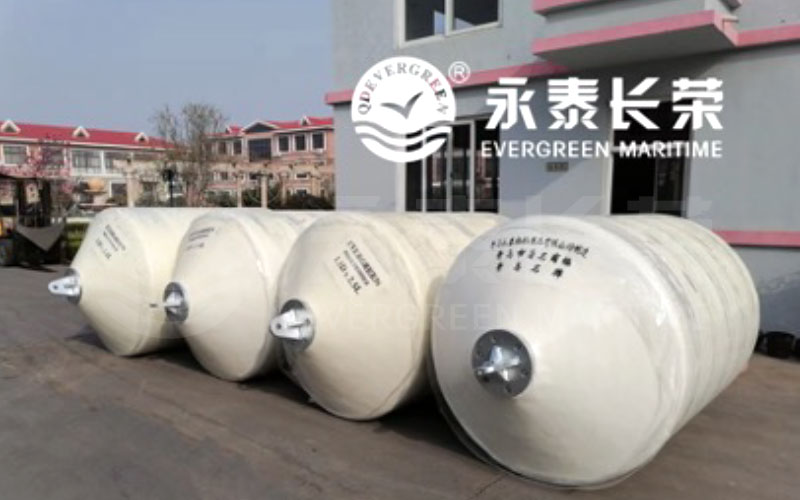Foam-filled fenders are considered the optimal solution for next-generation dock protection mainly due to their significant advantages in energy absorption performance, installation and maintenance, durability, cost-effectiveness, and environmental friendliness. Here is a detailed introduction:
Excellent Energy Absorption Performance
• High-Efficiency Energy Absorption: Foam-filled fenders utilize lightweight, highly elastic closed-cell foaming materials internally, such as polyurethane or expanded EVA. When a vessel berths, they can compress and deform like a sponge to absorb impact energy. Their energy absorption capacity can reach 1.2 – 1.5 times that of pneumatic fenders. They maintain structural stability even when compressed by 60%, with an energy absorption efficiency far exceeding traditional pneumatic fenders. This effectively reduces the reactive force on the vessel hull and the dock. For example, the reactive force coefficient of traditional DA-type rubber fenders is typically 60 – 80 kN/m, while that of foam fenders can be as low as 40 – 60 kN/m, representing a reduction in reactive force of about 30%. When large oil tankers and container ships berth, they can significantly reduce the structural stress on the vessel hull and prevent damage to the dock caused by excessive reactive force.

• Uniform Stress Distribution: Their closed-cell structure enables uniform stress distribution during compression, avoiding local stress concentration. In contrast, some traditional fenders, such as DA-type fenders with front deflector plates to reduce surface pressure, still have weaker overall stress distribution compared to foam fenders.
Convenient Installation and Maintenance
• Simple Installation: Foam fenders do not require complex fixing structures. They can be directly suspended from the vessel hull or the dock using chains, ropes, or nets. The installation time is reduced by over 50% compared to traditional fenders. Moreover, their modular design allows for free assembly, enabling adaptation to different dock angles and vessel sizes.
• Maintenance-Free: They do not require regular inflation checks, eliminating the maintenance costs and downtime risks associated with pneumatic fenders due to air leakage. Protected by an outer layer of polyurethane leather or fiberglass, they are highly resistant to seawater corrosion and can have a service life of 10 – 15 years without the need for frequent inspections or replacements, reducing operational interruptions caused by maintenance. For instance, after using similar products at a cruise ship terminal in the South China Sea, the annual maintenance costs decreased by 70%.
Adaptability to Harsh Environments and Durability
• Good Buoyancy: They possess buoyancy and can be installed at positions not restricted by tidal ranges. They can be quickly deployed in dock areas with different water depths, meeting the needs of various operational scenarios and enhancing dock scheduling flexibility. Even if the outer layer is scratched, the closed-cell foam can maintain the fender’s buoyancy, unlike pneumatic fenders which immediately lose pressure.
• Resistance to Environmental Erosion: They can withstand ultraviolet rays, salt spray, and extreme temperatures ranging from -30°C to 80°C. They can endure harsh marine environments and have a longer service life of 10 – 25 years, outperforming many pneumatic or rubber fenders in terms of performance.
Prominent Cost and Environmental Advantages
• Low Overall Cost: Although the unit price of foam fenders may be slightly higher than that of traditional fenders, the overall maintenance costs (such as inflation equipment and labor inspections) can be reduced by 40%. Long-term use can save on repair and replacement costs, facilitating efficient and sustainable dock operations.
• Environmentally Friendly Materials: They are manufactured using environmentally friendly materials and new polymeric materials with adjustable high elastic modulus, complying with environmental requirements.
